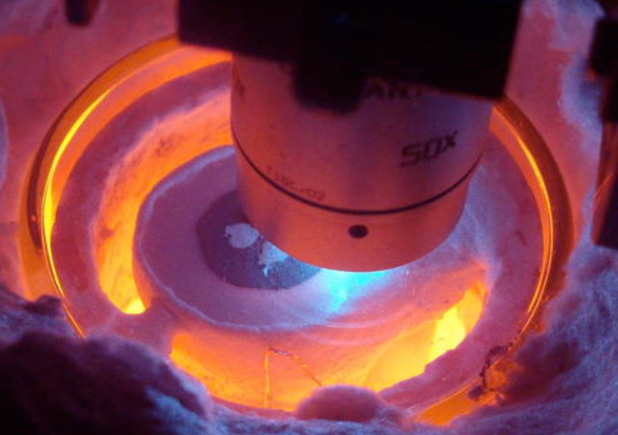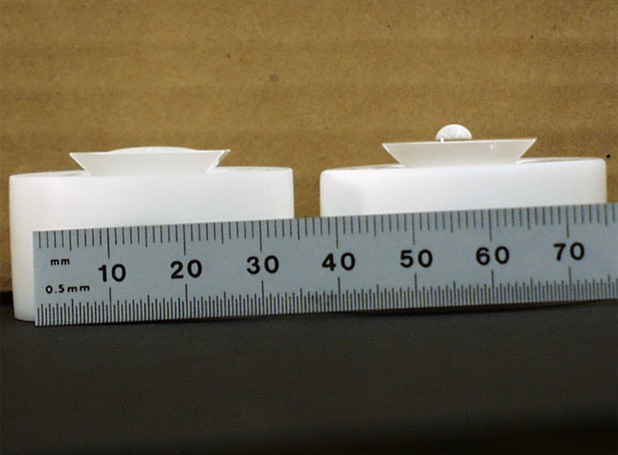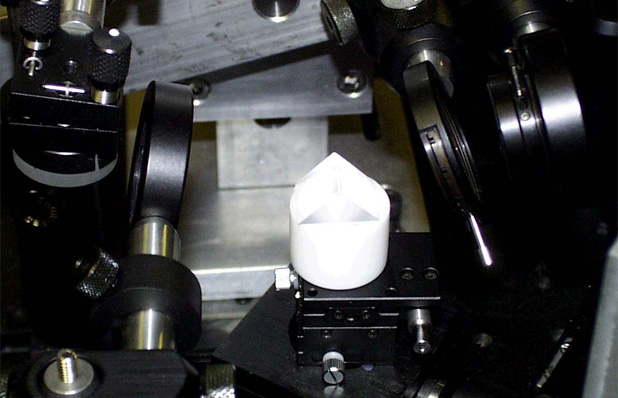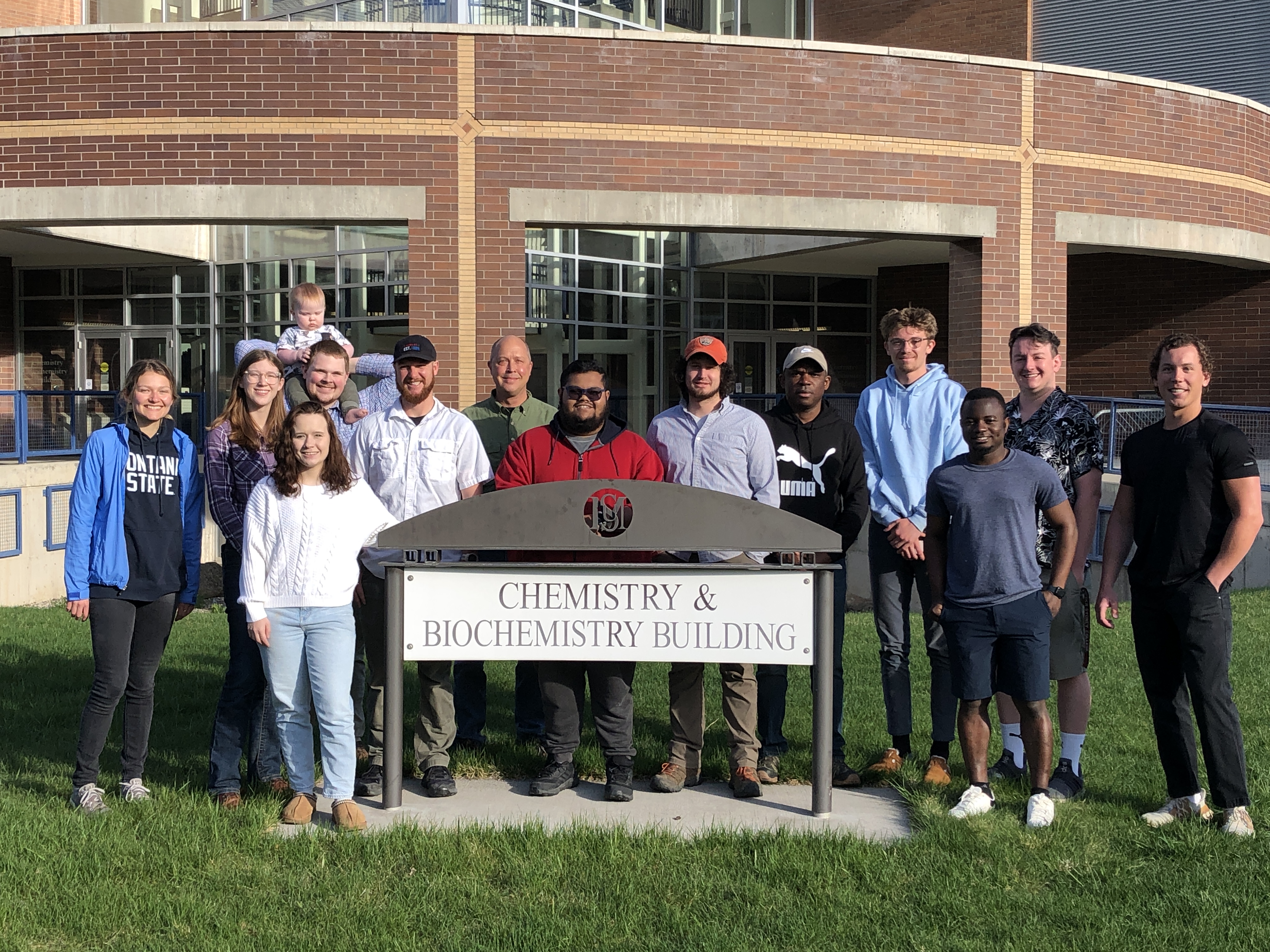Research

Optical Studies of High Temperature Surface Chemistry
The overall goal of this project is to identify the mechanisms responsible for electrochemical oxidation in solid oxide fuel cells (SOFCs). Due to the high activation energy needed to catalyze molecular oxygen dissociation and the small diffusion constants associated with oxide ion transport through doped, metal-oxide ceramics, SOFCs must operate at elevated temperatures – typically 650˚C or higher. Traditional studies of SOFC operation use electrochemical techniques to report on system performance, but these data cannot differentiate the chemical species responsible for observed behavior. Samples used in these studies are often subjected to exhaustive, ex situ, post mortem analyses. Thus, researchers are left to infer how chemical and structural changes observed after operation correspond to electrochemical performance measured during operation. To overcome the challenges associated with making measurements at high temperatures and under strongly reducing or oxidizing conditions, members of the group have built and adapted instrumentation to acquire vibrational Raman spectra from metal and metal oxide surfaces at temperatures in excess of 750˚C.

Solvation at Liquied Surfaces 1
Measuring the widths of liquid interfaces – Our original work in the area of surface chemistry was motivated by the simple question, “Do oil and water really not mix?” A more quantitative way of asking this question is “Over what lengthscales do the properties of one liquid converge to those of a second, immiscible liquid.” Using custom designed surfactants dubbed “molecular rulers” and resonance enhanced, second harmonic generation (SHG) spectroscopy we have measured the distances required for solvent polarity to transition from the aqueous to the organic limit across a wide variety of immiscible liquid/liquid interfaces. As a result of these studies, we discovered that interfacial asymmetry can force solvent species to organize differently compared to their long range structure in bulk solution. Consequently, liquid surfaces may acquire properties that can not be described simply by extrapolating contributions from the two individual phases. For example, water is a very polar solvent and long-chain alcohols have intermediate polarity based on their respective static dielectric constants. However, water/alcohol interfaces are dominated by a nonpolar, alkane-like region. These findings necessarily force one to reconsider proposed mechanisms of solvent extraction, interfacial electrochemistry and colloid stability.

Solvation at Liquied Surfaces 2
Structure and organization at liquid interfaces - Our studies of polarity across liquid/liquid interfaces raise questions about how molecules having different structures organize themselves when constrained to two dimensions. Irregularly shaped, organic molecules are ubiquitous throughout biology, chemistry and environmental science, yet very little is known about how these species assemble spontaneously to form organic films at aqueous interfaces. To answer these questions, we use vibrational sum frequency spectroscopy (VSFS) to acquire vibrational spectra of species adsorbed to the aqueous-vapor interface. These data coupled with careful surface pressure measurements provide the quantitative information needed to model the competing forces that control surfactant concentration and conformation at air/aqueous interfaces.
Surface Activity and Aggregation Behavior of Polyhydroxylated Fullerenes in Aqueous Solutions
Polyhydroxylated fullerene (PHF) surface activity and aggregation behavior at the air – water interface and in bulk aqueous solution were examined using surface tension and resonance enhanced second harmonic generation. Surface tension data showed that PHFs are surface active with a limiting surface excess corresponding to 155 Å2/molecule in aqueous (Millipore water) solutions. Increasing solution phase ionic strength (through the addition of NaCl) reduces PHF surface excess. Surface specific SHG experiments show a small but measurable fixed-wavelength, nonlinear response from the solutions having surface excess coverages as low as ~400 Å2/molecule. The SHG response of PHF solutions in the low-concentration limit shows unexpected behavior, implying that at bulk concentrations above 0.12 mg/ml (and a surface coverage of 4.0 x 1013 molecules/cm2 or 250 Å2/molecule), PHFs adsorb to the surface as dimers or higher aggregates and only at low concentrations do monomers contribute to the measured SHG signal. SHG activity implies that adsorbed species have electronic transitions that are both 1- and 2-photon allowed. This expectation is borne out by bulk solution measurements and by computational results that calculate non-zero oscillator strengths for 1- and 2-photon absorption.
Quantitative Membrane Partitioning Studies of Synthetic Organic Molecules into Model Biological Membranes
Bioaccumulation describes a biological membrane’s ability to concentrate solutes from the surrounding environment and is often correlated with a solutes octanol/water partitioning coefficient (logP). The log P scale has long historical legacy, but it fails to describe the chemical mechanisms responsible for bioaccumulation. Findings presented in this work employ both steady-state and time-resolved fluorescence emission to quantify solute partitioning into lipid vesicle membranes as a function of solute temperature and composition. Using time-correlated single-photon counting (TCSPC), we can determine where solutes concentrate in different environments within the lipid bilayer, information that cannot be inferred from a simple logP descriptions of solute partitioning. The partitioning data are then confirmed by complementary differential scanning calorimetry experiments to assess each solute’s affinity for the lipid bilayer and the changes that partitioning induces in the bilayer gel-liquid crystalline transition. Data recently published has displayed shortcomings of the traditional logP (octanol-water partitioning) as small structural changes in structurally similar solutes have displayed dramatically different partitioning behaviors (J. Phys. Chem. B. 2020, 124, 8299-8308). Additionally, in effort to build a more realistic and therefore more accurate model membrane, another study added amino acids to the lipid vesicles and analyzed the change in partitioning behavior of synthetic organic solutes (Biophys. J.2021, 120, 3676-3687). Currently, other work going on in this project analyze how amino acids themselves interact with biological membranes as well as how ecologically relevant synthetic organic solutes, herbicides, interact with model biological membranes. Together, these discoveries provide strong motivation for developing a molecular based understanding of bioaccumulation in the chemically complex environments created by biological membranes.
Surfactant Adsorption to Gypsum Surfaces and the Effects on Solubility in Aqueous Solutions
Gypsum - CaSO42H2O - is an earth abundant mineral and one of the primary sources of dissolved sulfate in environmental ground and surface waters. Sulfate concentration in groundwater near open-air coal mines can reach to 5000 mg/L, significantly exceeding levels considered safe for human (250 mg/L) and livestock (3000 mg/L) consumption. In this research project, surfactant adsorption and its effects on gypsum dissolution were examined. Vibrational sum frequency generation (VSFG) spectroscopy experiments give detailed information about surfactant adsorption on gypsum surface and orientation of adsorbed molecules. Conductometric titration is used to quantify dissolved sulfate in solutions and field samples. Additionally, EDX and XPS analysis techniques are implemented to investigate elemental composition on gypsum surface after surfactant interaction.
Second Harmonic Generation to Study Surface Electronic Response in Proof of Principle Materials.

